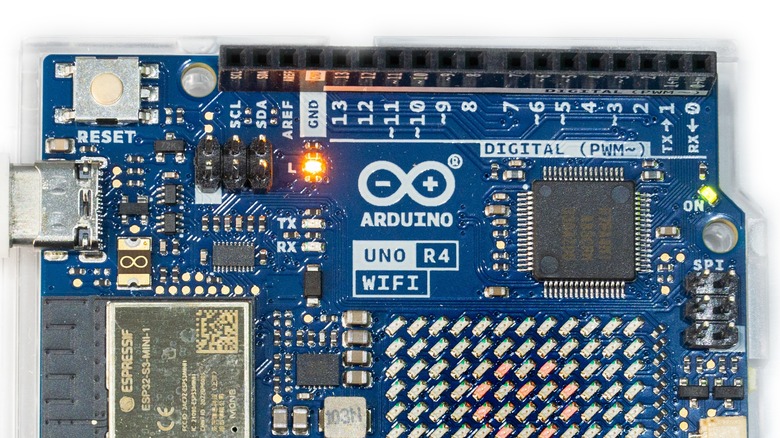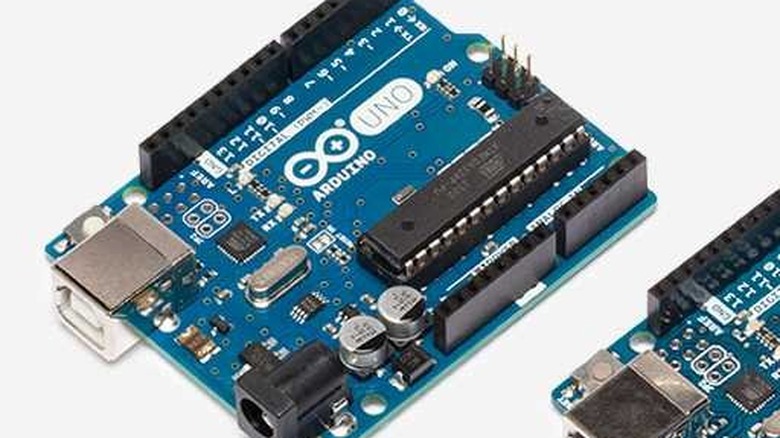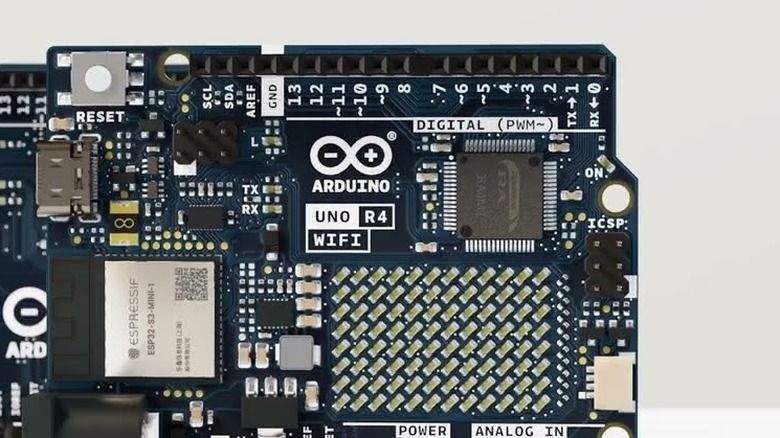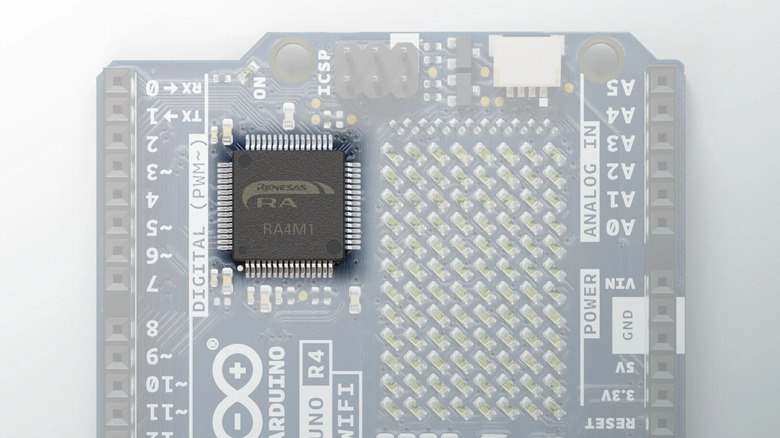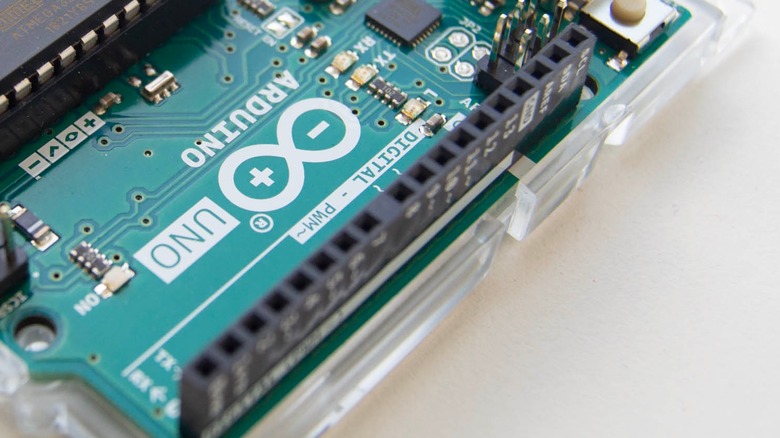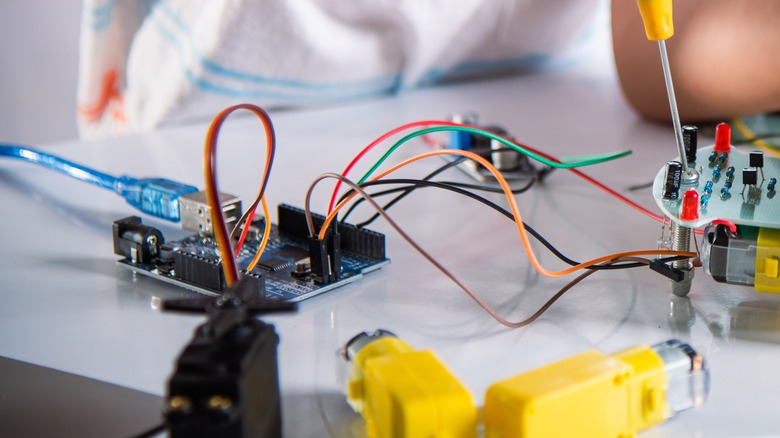Arduino Uno Rev3 Vs. R4 WiFi: What's The Difference Between These Computers?
In need of a simple microcontroller board for your project? Then, an Arduino board might be exactly what you're looking for. This open-source hardware platform comes in a multitude of versions, from the classic Uno to the tiny Nano to the powerful Giga, so it can be quite a task to pick one from the selection. However, there are two standout options you should consider, especially if you're looking for a beginner-friendly board: the Uno Rev3 and the Uno R4 WiFi.
Yes, they can be quite confusing since they're both from the Uno family and thus look the same. But the Rev3 and R4 WiFi aren't readily interchangeable: They're equipped with distinct components and features, and their applications are different as well. If you're curious about which one is more appropriate for your needs, we've compiled a list of the major differences between these two boards for clarity.
What is the Arduino Uno Rev3?
The Arduino Uno Rev3 is the third revision of the classic Arduino Uno board. Compared to its earlier iterations, it includes upgraded components and new features, such as an ATmega16U2 instead of an ATmega8U2 microcontroller, a more robust circuit for resetting the board, and additional SDA and SCL pins. Since the discontinuation of the original and Rev2 boards, the Rev3 has become the face of the Uno family and the Arduino brand in general. In fact, it's considered the most popular among the Uno boards and the most extensively documented among Arduino's offerings.
Using the Uno Rev3 is similar to using any of the other Arduino boards. It can be programmed with the Arduino IDE desktop and web editors, as well as the Arduino CLI. It also works with most of the popular libraries like Wire, SPI, and Servo. The Uno Rev3 is priced at $27.60.
What is the Arduino Uno R4 WiFi?
Introduced along with R4 Minima in 2023, the Uno R4 WiFi is the latest version to join the Uno family. It's a massive step up from its predecessors due to its modern features and components, with the most notable improvement being the shift from the typical 8-bit AVR microcontroller to the more powerful 32-bit ARM microcontroller. However, because the R4 WiFi still comes in the same form factor as the Uno Rev3, it remains compatible with existing hardware (e.g., shields, sensors) originally designed for the Rev3. This can smooth the transition from Rev3 to R4 WiFi if you want to upgrade.
Software-wise, the R4 WiFi also works with the traditional desktop IDE, along with the web editor and Arduino CLI. It can be used with the online Arduino Cloud platform, as well. You might, however, encounter some issues when migrating your Rev3 sketch to the R4 WiFi, as not all the Rev3 libraries work with this modern board.
Surprisingly, even with the upgrades and jam-packed features of the R4 WiFi, it's still slightly cheaper than the R3 at $27.50.
A Different Microcontroller
One of the most significant differences between the classic Rev3 and Uno's more recent iteration, the R4 WiFi, is the microcontroller. This component is the brain of the board and is what gives the Uno its computational power. For the Rev3, the microcontroller is an ATmega328P. It's an 8-bit AVR microcontroller running at a clock speed of 16 MHz and boasts a flash memory of 32 KB, 2 KB of SRAM, and a 1 KB EEPROM. Despite these modest specifications, the Rev3 can handle a wide range of tasks, from beginner projects like an Arduino-powered automatic plant watering system to more complex applications like a self-balancing mobile robot.
The R4 WiFi, on the other hand, is fitted with a Renesas RA4M1, a 32-bit Arm microcontroller. It operates at three times the speed of the Rev3 (48 MHz) and offers a massive upgrade in memory, with 256 KB of flash memory, 32 KB of SRAM, and 8 KB EEPROM. This means the board is highly suitable for more advanced and demanding projects with more code — think web-based home automation systems or a ground station monitor and control for a QO-100 satellite terminal.
On top of the differences in the technical specifications, what also makes the microcontrollers of the Rev3 and R4 WiFi distinct from each other is how they're connected to their respective boards. On the Rev3, the chip sits in a Dual In-line Package (DIP) socket, making it readily replaceable. On the R4 WiFi, the chip is soldered on the board, so if it gets damaged, you will need to desolder it manually.
The Uno R4 WiFi has buit-in wireless communication
Out of the box, the Rev3 comes with three onboard methods of communication: serial, I2C, and SPI. These are all wired connections, meaning they require physical cables to communicate with external components. The Rev3 does support wireless communication protocols like Wi-Fi and Bluetooth, though. However, additional components — a Wi-Fi shield and a Bluetooth module – are required.
The R4 WiFi is already equipped with Wi-Fi communication, thanks to the onboard ESP32-S3 module, which the Rev3 lacks. The R4 WiFi's Wi-Fi feature offers speeds of up to 150 Mbps and can function without an external antenna. In addition to Wi-Fi, the ESP32-S3 provides the board with Bluetooth capabilities, allowing you to use the board for both Bluetooth LE and Bluetooth 5 applications.
While the board does include these two wireless features natively, you can't use them simultaneously as they share the same antenna. Meanwhile, on the Rev3, you're free to utilize both the add-on Wi-Fi shield and Bluetooth module since they connect to different pins (the Wi-Fi shield to the SPI bus, and the Bluetooth module to the TX and RX pins).
Another difference between the Rev3 and R4 WiFi is the number of their serial ports and I2C buses. The Rev3 has a single serial connection, shared by the USB port and the RX/TX pins. There's also only one I2C bus on the Rev3. In contrast, the R4 WiFi includes two serial ports and two I2C buses. One serial port is accessible from the USB port, and another is connected to the RX/TX pins. The I2C buses, on the other hand, are found on pins A4 and A5 and the Qwiic connector.
Pinout differences between the Uno boards
Many pins on the Rev3 and R4 WiFi share similar functions to ensure compatibility with existing hardware. However, the R4 WiFi introduces new pinouts and special pin functions you don't see on the Rev3.
Let's start with the new pins. Behind the R4 WiFi's barrel jack is a set of three headers labeled OFF, GND, and VRTC. The OFF pin is designed to turn off the board when it's powered via the barrel jack or VIN pin. The GND pin, which you already know, is for grounding your circuit. The VRTC pin is meant to be a power pin for the R4 WiFi's onboard Real Time Clock (RTC). While the main supply can power the RTC, you may need to use a separate supply for this device to ensure it functions as intended even when the Arduino is turned off or disconnected from the main supply. The VRTC pin supports anything between 1.6V and 3.3V, so using two AA batteries would be fine.
Now, onto the existing pins with additional special functions. In the R4 WiFi, A0 (originally used as an analog input) doubles as a digital-to-analog converter (DAC) pin that acts as an analog output. D10 and D13 (usually digital I/O pins) can also be a CAN bus, which is mainly for communicating with devices within a vehicle. A1, A2, and A3 (also analog input pins) now have a special functionality as OPAMP pins, capable of outputting the same voltage or increasing the voltage connected to it.
The Uno R4 WiFi has extra ans upgraded features
The R4 WiFi is equipped with extra (and upgraded) on-board features you can't find on the Rev3, such as a Type-C USB port instead of a Type-B 2.0. This makes the board less bulky (the Type-B 2.0 is quite large), and eliminates the need to buy a USB cable, as you likely already have a Type-C cable lying around your home.
Another feature that the R4 WiFi boasts is its 12x8 red LED matrix, which is readily programmable using the Arduino_LED_Matrix library. This feature can come in handy in various Arduino projects where you need to display basic text, graphics, or animation but don't want to buy additional hardware.
There's also a slight input voltage difference between the Rev3 and the R4 WiFi. The Rev3 has a limit of 6 to 20 V only (although the recommended power supply rating is between 7 and 12 V). Meanwhile, the R4 WiFi is capable of handling up to 24 V. This expanded voltage range can make it easier to use only one power source for your entire project, especially if you're working with 24V components like relays, motors, and solenoids.
Arduino also upgraded the R4 WiFi's analog-to-digital converter (ADC), which is responsible for reading data from the analog inputs. On the Rev3, the ADC supports up to 10-bit resolution, with values from 0 to 1023. But on the R4 WiFi, this is increased to 14-bit. This allows the board to read more data (values from 0 to 16383).
Which Uno should you buy?
Although the Rev3 and R4 WiFi come in the same form factor and pinouts, they serve different purposes, and deciding which board to buy depends entirely on your project requirements.
If you're just getting started with Arduino and don't already have a project in mind, the Uno Rev3 is what you want to get. Not only are there countless tutorials and documentation for this exact board, but it's also included in most Arduino starter kits on the market (most beginners go with starter kits for convenience). Additionally, the Rev3 is pretty easy to work with for newbies. It's compatible with many of the sensors, shields, and other electronic components used in Arduino projects, and it also supports the example sketches in the Arduino IDE with no modifications needed.
If, however, you're a more advanced developer or hobbyist, and are looking to create IoT projects, then the R4 WiFi is for you. It features Wi-Fi and Bluetooth connectivity out of the box, so you won't need to buy and work with separate modules. The R4 WiFi is also a more sensible choice for more sophisticated multi-sensor projects that may need higher processing power and memory. Although the R4 WiFi is primarily marketed for advanced users, you can still use it as a beginner board since it still comes with the same basic features of the Rev3.
